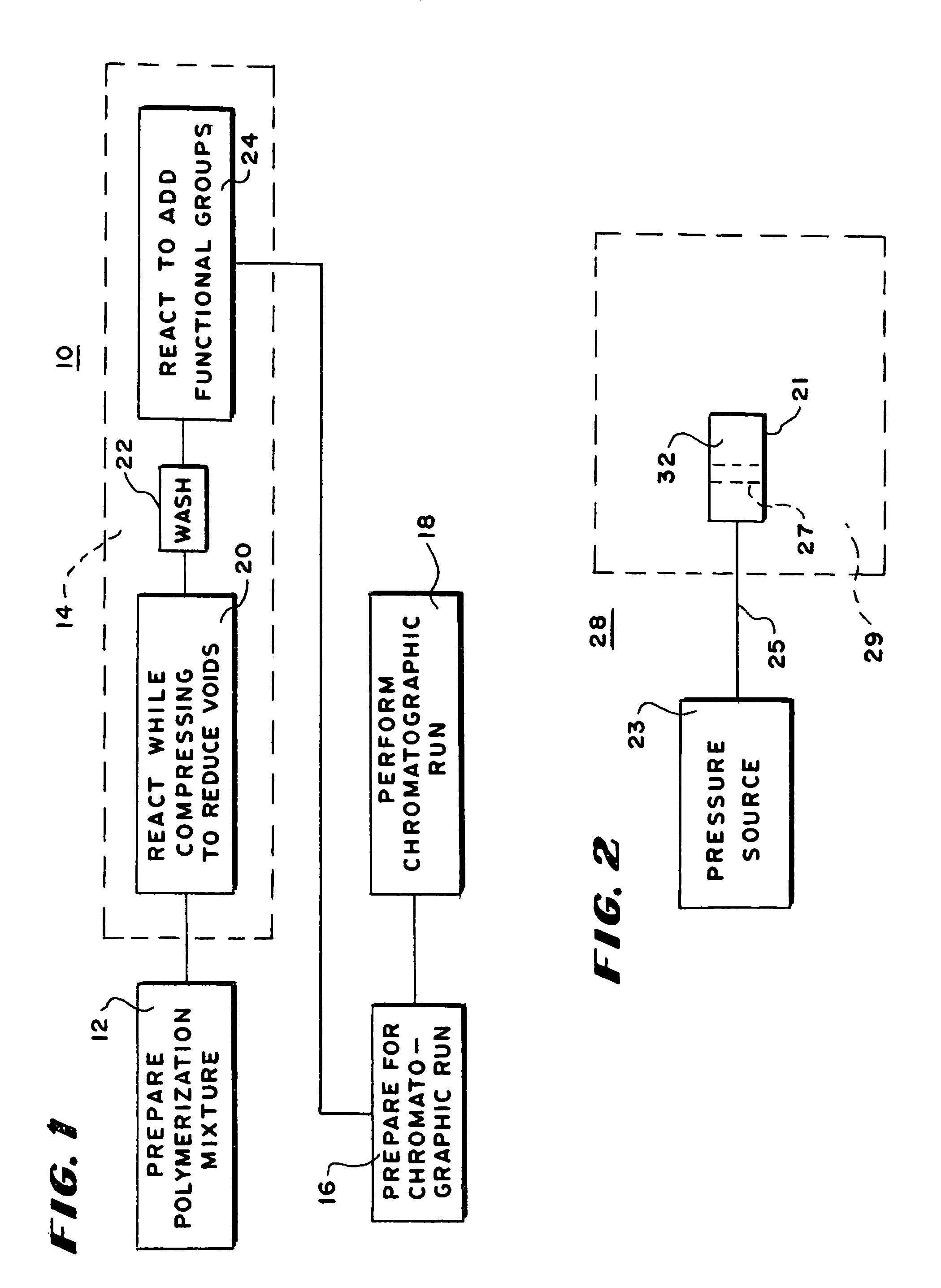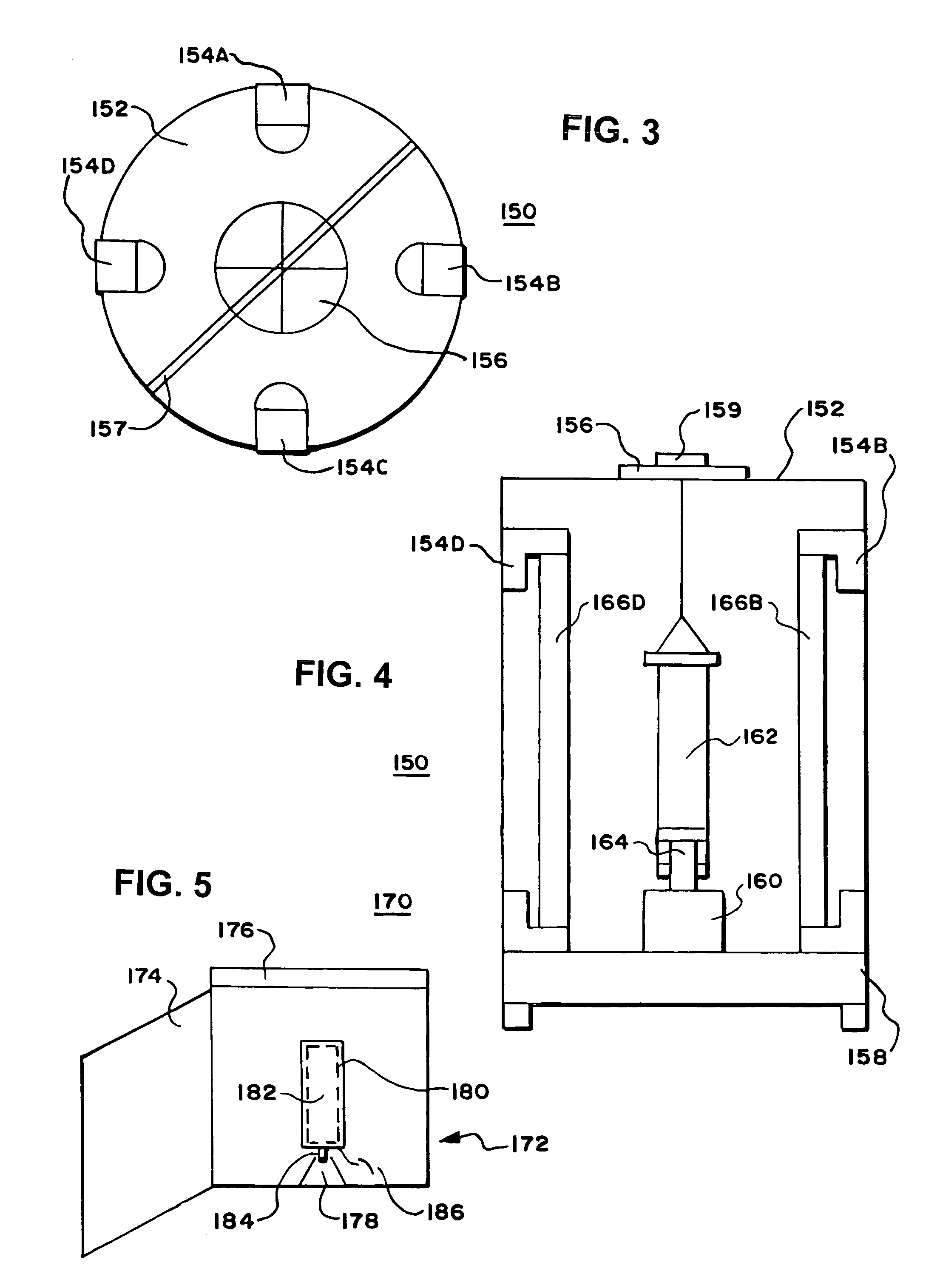Monolithic column
a monolithic column and column body technology, applied in the field of monolithic columns, can solve the problems of little more or less resolution and speed, low efficiency of columns, and high cost, and achieve the effects of increasing the homogeneity, increasing the size distribution and uniformity of separation effective openings throughout the polymer, and increasing the uniformity of particle siz
- Summary
- Abstract
- Description
- Claims
- Application Information
AI Technical Summary
Benefits of technology
Problems solved by technology
Method used
Image
Examples
example 1
[0245]An empty syringe barrel (70×12 mm i.d. Redisep barrel for Combiflash chromatography from Teledyne Isco, Inc., 4700 Superior Street, Lincoln, Nebr. 68504) was sealed at one end and filled with the following polymerization liquid mixture: 1.6 g hydroxylethyl methacrylate, 6.4 g divinylbenzene, 89 mg AIBN, 12 g dodecanol after degassing with N2 for 20 minutes. The tip of the barrel was sealed with a blocked needle. This barrel was heated in a water bath at 70° C. for 24 hours. It was connected to a HPLC pump and washed with THF at the flow rate of 1 ml / min for 30 minutes. It was then used for both normal phase and reversed phase separation of phenolic compounds.
example 2
[0246]A disposable column (50×4.6 mm i.d.), which is 50 mm length and 4.6 mm inner i.d.) was prepared as Example 1 with the following polymerization liquid mixture containing 1 g methyl methacrylate (MMA), 1 g EDMA, 1.8 g cyclohexanol, 1.2 g dodecanol and 0.02 g AIBN-It was connected to a HPLC pump and washed with THF and water at 0.5 ml / min for 20 minutes in sequence.
[0247]This column was subjected to a hydrolysis reaction as follows: (1) 2 ml 6 mol / l NaOH was pumped through the column at the flow rate of 0.5 ml / min; and (2) the column was sealed by two column plugs and placed in a water bath at 80° C. for 1 hour. It was washed with 20 ml water at the flow rate of 0.5 ml / min and characterized with protein separation and binding capacity measurement described in the LC Characterization Method.
Alternative Versions of Example 2
[0248]A column was prepared as Example 2 with the following polymerization liquid mixture: 0.1 g acrylic acid (AA), 0.9 g methyl methacrylate (MMA), 1 g EDMA, 3...
example 3
[0262]A polymerization liquid mixture was prepared as follows: Weighed 1.2 g of glycidyl methacrylate (GMA), 0.80 g of ethylene dimethacrylate (EDMA) (polymerization mixture 1) and 0.02 g of 2,2=-azobisisobutyronitrile (AIBN) into a 20 ml sample vial and shook the mixture gently until it became a homogeneous liquid mixture; Weighed 2.55 g of cyclohexanol (CHOH) and 0.45 g of dodecanol (DODOH) into this liquid mixture and shook it until it is homogeneous. The polymerization mixture was degassed as in the degassing procedure.
[0263]An empty disposable column or syringe (4.6 mm inner i.d. and 50 mm length), one end of which was sealed by applying pressure and the other end of which is formed integrally with the column walls as in the aforementioned U.S. Pat. No. 6,565,745, was filled with this liquid mixture until the column was full. Pressure of 120 psi was applied from the end sealed with the pressure device. No air was inside the column. This column was placed into a water bath uprig...
PUM
| Property | Measurement | Unit |
|---|---|---|
| pressure | aaaaa | aaaaa |
| pressure | aaaaa | aaaaa |
| pressure | aaaaa | aaaaa |
Abstract
Description
Claims
Application Information
 Login to View More
Login to View More - R&D
- Intellectual Property
- Life Sciences
- Materials
- Tech Scout
- Unparalleled Data Quality
- Higher Quality Content
- 60% Fewer Hallucinations
Browse by: Latest US Patents, China's latest patents, Technical Efficacy Thesaurus, Application Domain, Technology Topic, Popular Technical Reports.
© 2025 PatSnap. All rights reserved.Legal|Privacy policy|Modern Slavery Act Transparency Statement|Sitemap|About US| Contact US: help@patsnap.com



